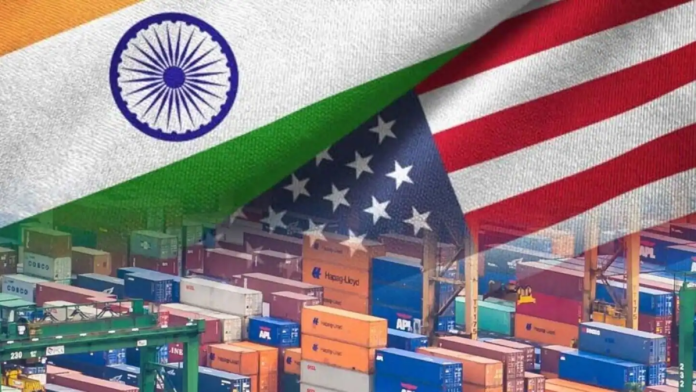India may soon face steep U.S. import tariffs of up to 25%, as President Donald Trump signaled this week. While the final decision is still pending, the statement has added fresh tension to ongoing trade talks between the two countries. Trump, speaking to reporters aboard Air Force One, expressed frustration with India’s high tariffs on American goods, even as officials on both sides race to strike a deal ahead of the August 1 deadline.
High Tariffs Loom as Trump Warns of Up to 25% on Indian Goods
President Trump stated that India, despite being a strong partner, has imposed higher tariffs on U.S. products than most other countries. “You just can’t do that,” he said, emphasizing the need for fairer trade terms.
India had been hoping for more favorable treatment. The country expected a lower rate than the 19% offered to Indonesia and the Philippines. However, with only days left before the tariff deadline, there’s still no final agreement. Talks are continuing, but the U.S. may move forward with tariffs between 20% and 25%.
The Indian economy reacted quickly to the threat. The rupee dropped as much as 0.5% to 87.24 against the U.S. dollar. The BSE Sensex, which had shown early gains, flattened out in late trading. Market experts say investors are closely watching the tariff developments, given their wide potential impact.
📢 Trump weaponizes AI to crush reliance on India, China — ‘Put America first or pay’
Key Indian Exports at Risk from New U.S. Tariffs
India is one of the top suppliers of several goods to the U.S. A high tariff could make these items more expensive and less competitive. According to the Reuters India’s exports to USA were $87 Billion in the year 2024. Major exports from India to the U.S. include:
- Pharmaceutical products – about $13 billion in value.
- Gem diamonds – worth $6.7 billion.
- Cotton clothes and household textiles – around $5.9 billion.
- Jewelry – estimated at $3.5 billion.
- Industrial machinery – worth $2.6 billion.
- Petroleum products – valued at $3 billion.
- Rugs, spices, natural fibers, and tea – all major contributors.
🚨 Real rigged? Brazil probes insider leak tied to Trump tariffs and Bolsonaro circle
India’s strong trade relationship with the United States spans both industrial and consumer goods. A tariff of 25% could disrupt the supply chain for many American companies relying on Indian exports, especially in pharmaceuticals and textiles.
Talks Continue as Modi Government Pushes Back on U.S. Demands
Five rounds of trade talks have already taken place, and a U.S. trade delegation is expected to visit New Delhi by mid-August. However, reaching a deal before the August 1 deadline is looking difficult.
India, led by Prime Minister Narendra Modi’s administration, has made it clear that some demands are off the table. According to sources familiar with the negotiations, India will not allow the import of genetically modified crops and is not willing to open its dairy and automobile sectors completely. These areas are politically sensitive, with millions of farmers depending on them for their livelihood.
💥 Deal of the decade? Trump slaps 19% tariff on Philippines—U.S. exports get free pass
Still, India has shown openness in areas like pharmaceuticals and auto components. Officials have proposed zero tariffs on a limited set of goods, hoping to ease tensions and avoid harsher penalties.
Meanwhile, President Donald Trump has also threatened “secondary tariffs” on countries like India and China if they continue purchasing Russian oil amid the war in Ukraine. This broader geopolitical backdrop has further complicated the talks.
United States Trade Representative Jamieson Greer said earlier in the week that more time is needed to assess India’s willingness to open its markets to American goods. As of now, India’s Ministry of Commerce is still waiting for a final signal from the White House.


